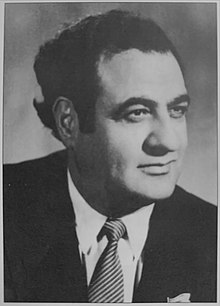In the period 1965-1985, John Kirakosian established himself as one of the most influential voices in a new generation of Soviet Armenian historians dealing with the previously taboo subjects of the Armenian Question and the Armenian Genocide.
He was born on May 6, 1929, in Yerevan. After finishing high school, he entered the School of International Relations of Yerevan State University and graduated in 1951. He pursued doctoral studies in Moscow, at the Institute of Oriental Studies of the USSR Academy of Sciences, and specialized in the modern history of Eastern countries. In 1954, he defended his dissertation on the British military intervention in Iran in 1918-1921.
Kirakosian returned to Yerevan and, afterwards, his life would be divided between scholarship and work as a party and state official. From 1955-1962 he headed the propaganda section of the party monthly Leninian ughiov. Afterwards, he was deputy head of the section of propaganda and political agitation of the Central Committee of the Communist Party of Armenia (1962-1966) and president of the state committee of TV and Radio of the Council of Ministers of Soviet Armenia (1966-1969). In 1969, he became head of the department of science and educational institutions of the Central Committee of the party. His final position, and the one for which he became better known abroad, was that of Minister of Foreign Affairs of the republic (1975-1985). While the ministry depended entirely of the Ministry of Foreign Affairs of the Soviet Union, it also had an informative function for the leadership of the Armenian republic, and during Kirakosian’s tenure, which coincided with the explosion of political activism in the Diaspora, it was particularly active.
As university professor, Kirakosian first taught at the School of History of Yerevan State University (1967-1968), and then went on to teach at the newly founded School of Eastern Studies, first as professor and then as head of the chair of history of Eastern peoples.
His actual contribution to Armenian historiography started in the 1960s. The revival of national feelings and the relative liberalization of rigid ideological constraints allowed for the rise of social sciences, particularly in the field of Armenian Studies. In 1964, Kirakosian, together with his colleagues Hovhannes Injikian and Tzatur Aghayan, signed off on a project of activities for the commemoration of the fiftieth anniversary of the genocide in 1965 that was adopted by Yakov Zarobian, the progressive first secretary of the Communist Party of Armenia, and then forwarded to Moscow and approved.
Besides various scientific articles, Kirakosian became the author of three groundbreaking monographs that helped restoring the status of the Armenian Question and the Armenian genocide as subject of historical research. They made a thorough critique of Ottoman policies against the Armenian population of the empire and the historiographical distortion by Turkish historians. World War I and the Western Armenians (1914-1916), published in 1965, was reprinted in 1967 and translated into Russian in 1971. It was followed by the two-volume The Bourgeois Diplomacy and Armenia (1978 and 1980), encompassing the 1870s and 1880s, of which the first volume appeared in Russian (1981), and the two-volume The Young Turks before the Judgment of History (1982-1983). The latter was posthumously published in English translation (1992).
He also edited and prefaced a voluminous collection of documents, Armenia in the Documents of International Diplomacy and Soviet Foreign Policy (1828-1923) (1972).
Following heart complications, John Kirakosian passed away at the age of fifty-six, on June 20, 1985, in Moscow. He was buried in Yerevan. He earned the State Prize of Soviet Armenia, posthumously, for his historical works. His son, Ambassador Arman Kirakosian (1956-2019), who was Ambassador of the Republic of Armenia in the U.S., among other positions, followed his steps as historian and diplomat in post-Soviet Armenia.
